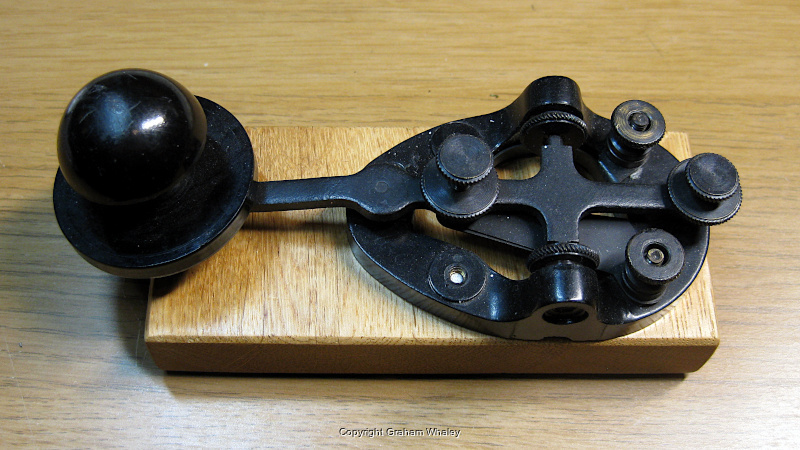
Here we have a, well, ‘classic’ - the J37 key. I suspect if you are in the U.S.A. then every CW ham has one or more of these somewhere, or has had in the past. They seem pretty ubiquitous.
They have a good reputation as a nice and sometimes reasonably cheap key. Apparently not as cheap as they were in days gone by, but still potentially good value.
I had a J37 on my list of keys to try. As it happened in 2022 a U.K. ham had acquired a bunch of keys and was disposing of them. I secured a J37 for £30, delivered.
Note, although this post is dated November 2024, I actually cleaned up and mounted the key back in August 2023 - just somewhat behind on updating my posts!
Well, it turns out they key I got is slightly unusual. If you look closely you can see the trunnion adjusters are on the inside of the pivots, whereas normally you will find them on the outside. This makes the key somewhat narrower, and it would seem that this is likely a J37 key from a Key and Plug Assembly No. 9.
The other thing you’ll notice is a much more european style grip with a rouded knob and a skirt, unlike most J37’s that have just a simple flat knob.
The key came unmounted, and pretty clean. It had a little bit of dust on it, and a touch of grime on the skirt, but other than that, pretty pristine.
It’s not a complex key. The mechanics are relativley simple, and there are only so many things that could go wrong. One interesting subtle thing about how the key works electrically. The key I have is ‘all black’ - pretty much every last bit of it (which seems unusual for a No.9 variant…) - but, if you look very closely you can see that there is a tiny spot that is not painted on the end of the spring, and a matching tiny bit on the bottom of the tension screw. That’s because they form a critical part of the electrical path, passing the current into the armature, so it can make contact with the bottom contact upon closure. Subtle if you don’t know that is how it is working…
I will note here, I’m not sure if the key was originally all black or if that has been done later on by a previous owner. Most of it looks original, but all black No.9’s don’t seem common.
Well, the key didn’t need much cleanup at all. There was a little bit of dust and a tiny bit of grime on the knob, but apart from that the only part I cleaned up were the pivot points, wiping down the points on the edges of the main beam and using a sharpened stick and some paper sprayed with solvent to clean out the divots in the end of the adjustment screws.
I have to admit, I suspect I have not given this key as much of a workout as I perhaps should. It has an easy action that is not too hard, but I think the base I have mounted it on is a little too small, too light and the felt feet are slightly slippy and soft. To really do the key justice I should remount it on a heavier more stable base… let’s see if I find time (but, tbh, there are other keys in the queue I really want to try out first…).